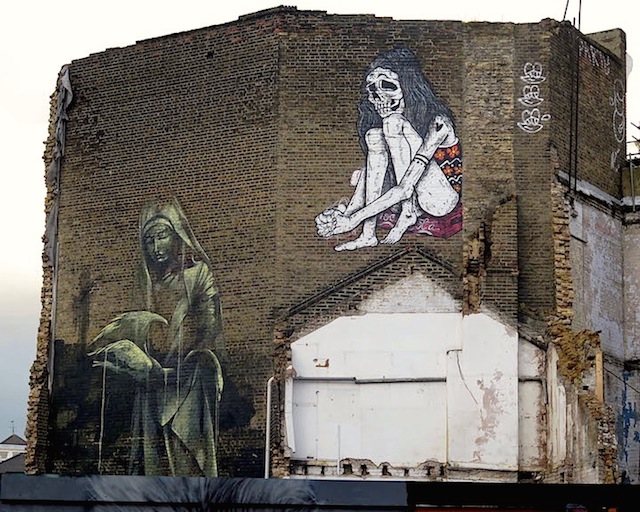
This is the second post featuring some of the walls that I recently saw in Shoreditch, the East London neighborhood that is increasingly attracting artists from throughout the globe.
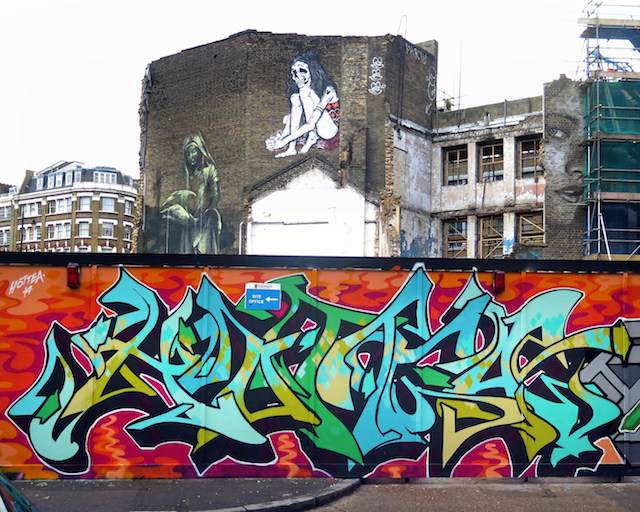
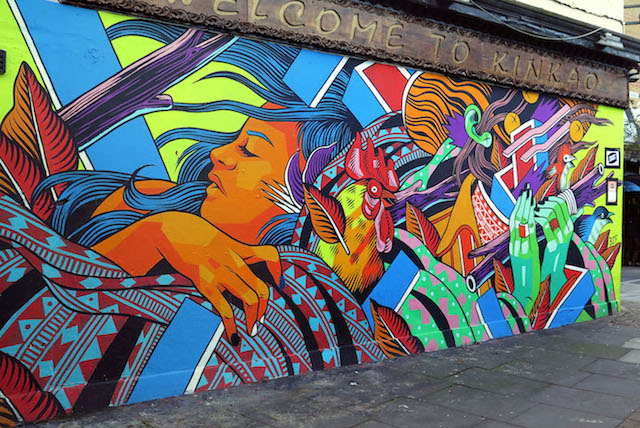
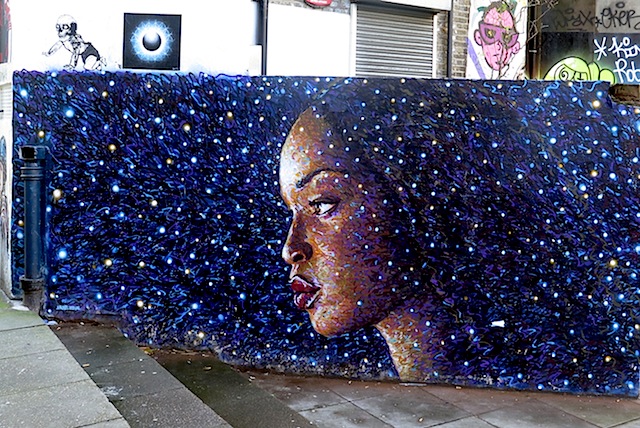
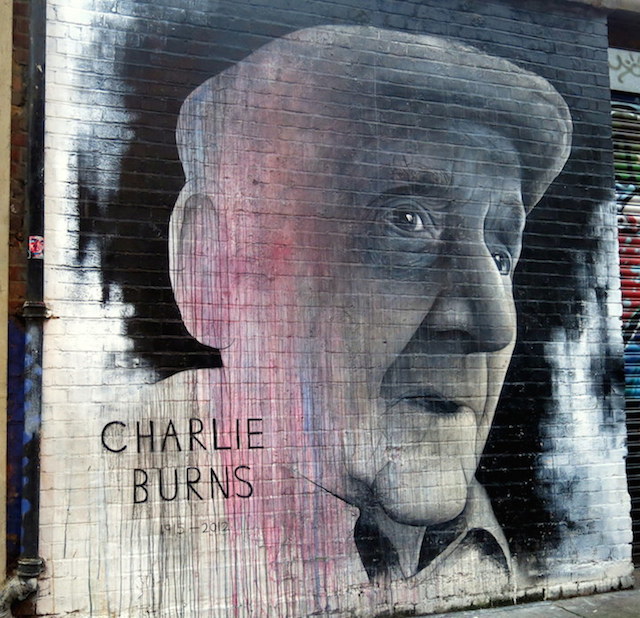
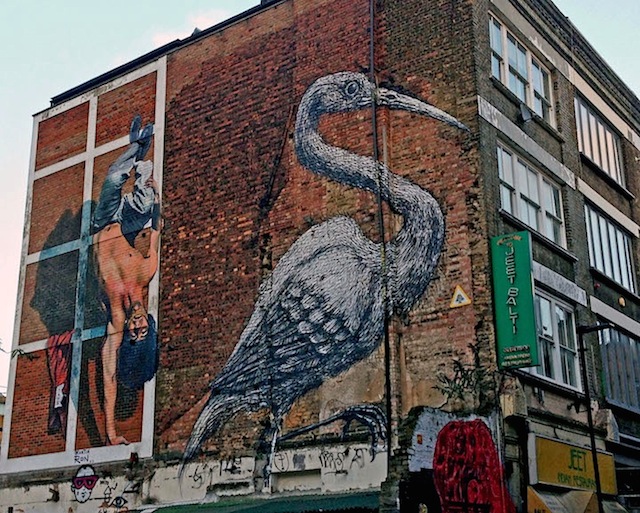
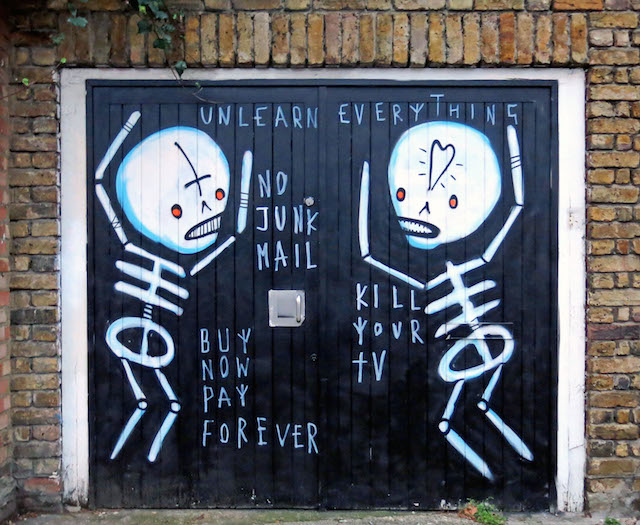
Photos 1-4 by Dani Reyes Mozeson; 5-7 by Lois Stavsky

This is the second post featuring some of the walls that I recently saw in Shoreditch, the East London neighborhood that is increasingly attracting artists from throughout the globe.






Photos 1-4 by Dani Reyes Mozeson; 5-7 by Lois Stavsky
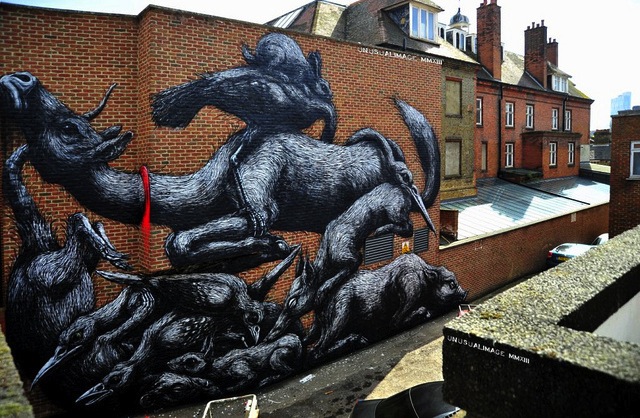
Happy weekend. Hope you’ve had a less busy week than me.
Photo by Unusualimage

A note from RJ – This guest post is by my friend Shafiur Rahman, whose films I’ve posted about several times on Vandalog. Shafi is an interesting figure in the London street art community. Yes, he can be seen wandering around Shoreditch looking at work or at the gallery openings, but he isn’t just a street art fan boy. He is interested in street art, but his film company makes films about a wide range of social issues. On a few occasions, he’s been able to bring a bit of politics back into street art and muralism by involving street artists in his other film projects. What he writes about here is just one such instance.
In 2010 I started filming a film about apartheid in South Africa. After conducting several interviews, I realised I had interviewed – unwittingly – various members of the Picasso Club. These were activists who used to paint anti-apartheid slogans in the dead of night in the city of Johannesburg in the 1960s. Some of the members of the club are still alive and they have led very distinguished lives – everything from 26 years of imprisonment to holding high office in the post-apartheid government of Nelson Mandela.

These Picasso club guys gave me an idea. It dawned on me then that I could use street art meaningfully in my film. A kind of sloganeering too because I had in mind to paint giant portraits of those who had died in the struggle and who were now fading from memory. Fading both in terms of being easily recognised and in terms of the spirit they embodied: selfless struggle and sacrifice, I think is the phrase here. So the art would question the viewer – who is this you are looking at and why here. I had in mind to paint people who had died in the struggle and were intimately connected to the places where they would be painted. It could be where they worked or where they lived or where they were killed.

So Ben Slow painted Ruth First. She was a white Jewish woman, a communist party member and a dedicated fighter against apartheid. The apartheid regime killed her with a letter bomb. We painted her at a spot not far from a place called Kliptown. This was the place where the Freedom Charter was adopted by the many organisations fighting apartheid. Over the years the Freedom Charter became the central document outlining an egalitarian vision of South Africa. Ruth First helped draft that document. We painted her in a community which has experienced much violence and continues to do so. The building we chose was big enough to paint the 4m mural. Surrounding it are other smaller dwellings with no electricity or running water. They are simple one-roomed tin shacks. The legacy of apartheid is still evident in 2012. Sadly the values Ruth embraced and fought and died for are less evident in today’s South Africa. That is the general feeling. Picasso Club members despite their loyalty and polished diplomacy betrayed similar feelings in their interviews.
The people of Nomzamo park loved the mural. Some had a notion of who Ruth was. Most did not. One guy who knew of her kissed Ben’s hand and said he loved him for painting her.

Photos by Shafiur Rahman

Ben Slow has returned to Hanbury street to paint the same spot he painted back in 2010. This time, Ben has painted portraits representing the white nationalists of The English Defence League and Islamic extremists. Here’s what Ben has to say about the work:
With my latest street piece, I returned to the wall on Hanbury street which I first painted around this
time back in 2010. That piece was one of the first ‘proper’ street pieces I ever painted. It was of a
Bengali mother and child. The image was chosen to relate to the local Bengali community who
thankfully embraced the piece. I felt that with this next piece, I wanted to challenge people (and
myself) a little more.This time I wanted to deal with something at the complete opposite end of the spectrum but still
very much related to the local community. I had a very clear idea of what this piece was meant to
represent when I started it, and to be honest, I thought it would be very obvious from the outset.
However, I was shocked (and also delighted) with the variety of responses and reactions I received.My idea behind the painting was to show two characters as different sides of the same evil. On the
left you have a portrait of a member of the EDL (The English Defence League) and on the other,
that of an Islamic extremist. I have been very interested by such characters for a while. As a
portrait painter they were interesting in terms of the expressions and shapes, but as a human being,
I always struggle with the stories behind such portraits and that they are captured out of such hatred
and contempt for another human being.My point is simply that these two people represent the same thing – that of intolerance, racism and
hatred. A very unfortunate but very real side of society that has become far too apparent of late.
They see those who do not conform to their views as the enemy, and they preach hatred. They
project themselves as different from the other but to the majority of people they represent the exact
same thing.I thought I would have trouble getting this painting done. I think it would be fair to say that I
under-estimated the tolerance of people. Except for a couple of snide comments, I received nothing
but positive responses. The majority of people completely understood what I was trying to say and
backed what I was doing. Most people, whatever ethnicity or nationality they may be have no time
for the types of people I was painting and I can not tell you how happy it made me to hear this. The
beautiful thing is that that these extreme individuals are a minority and long may it stay that way!As with the majority of my street work now, it is important for me to say something with what I am
painting. Be that representing someone I admire or appreciate, or in this case highlighting a
particular point. As much as I am a painter, I am also a massive fan of street art, but I feel that not
enough artists are using their privileged platform to full effect. I am all for stuff that looks great and
is aesthetically pleasing, but for me it is also important to say something once in a while, get people
thinking rather than simply admiring the beauty of something.
Photo by Shafiur Rahman
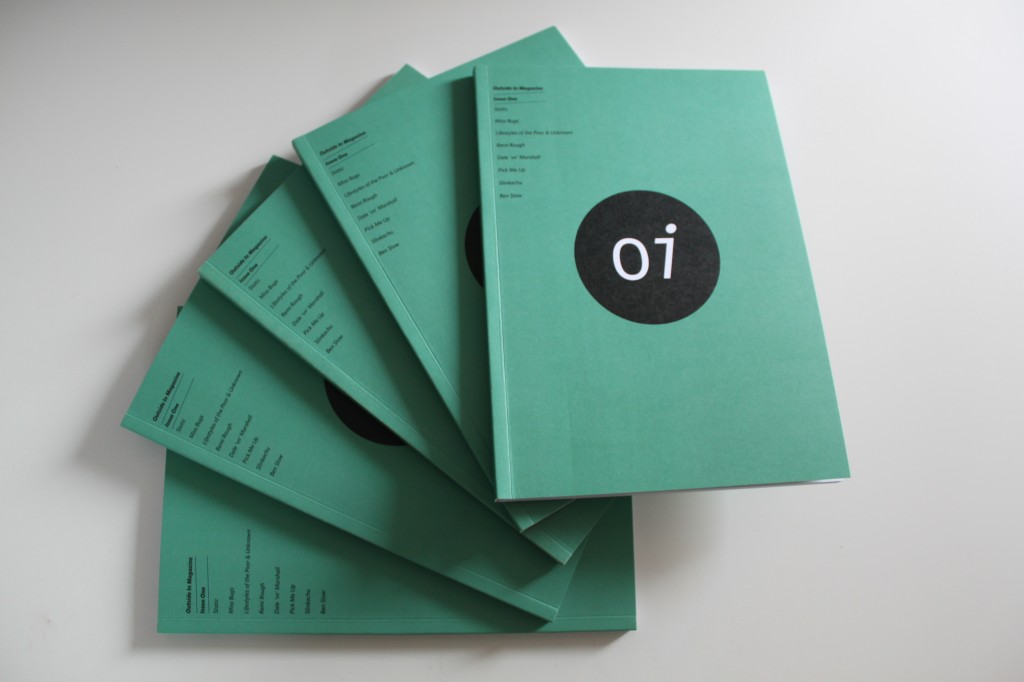
Following in the footsteps of the fantastic VNA Magazine, comes Outside In, the product of an up and coming design graduate from Winchester University. Documenting street art, design and illustration, this non commercial art magazine is debuting today, Friday 17th, at 3pm British Summer Time!
Running as an edition of 155, with 55 special edition copies, the magazine boasts illustrative duo Static as its feature artist. Adding interviews and features with Miss Bugs, Lifestyles of the Poor & Unknown, Remi Rough, Dale ‘vn’ Marshall, Slinkachu and Ben Slow, I’m sure you will agree that for just £6* you can’t go wrong!
*Standard edition price… Or for all you big spenders, the two special box set deals offer you signed photos and hand finished prints by Static.
Check it out on the Oi website here. Personally I’m quite looking forward to seeing what Remi has to say and reading the feature on Slink.
Picture by Oi Magazine
This video tells the story of one of my favorite murals in East London. It was painted by Joe Deane, Joseph Loughborough and Ben Slow. But it also touches on another story…
Street Art and Reality on Hanbury Street, London. from Shafiur Rahman on Vimeo.